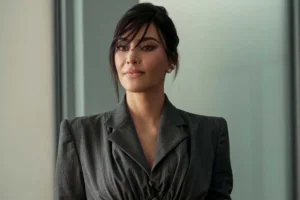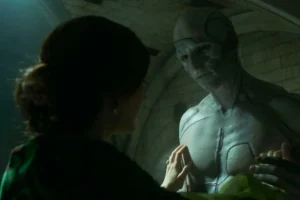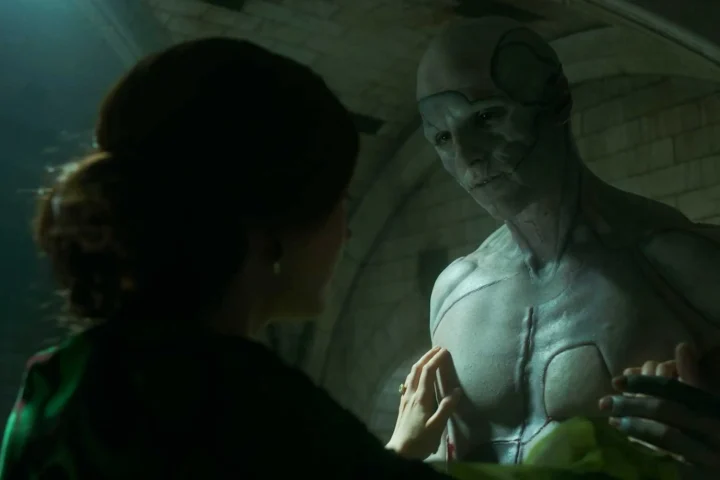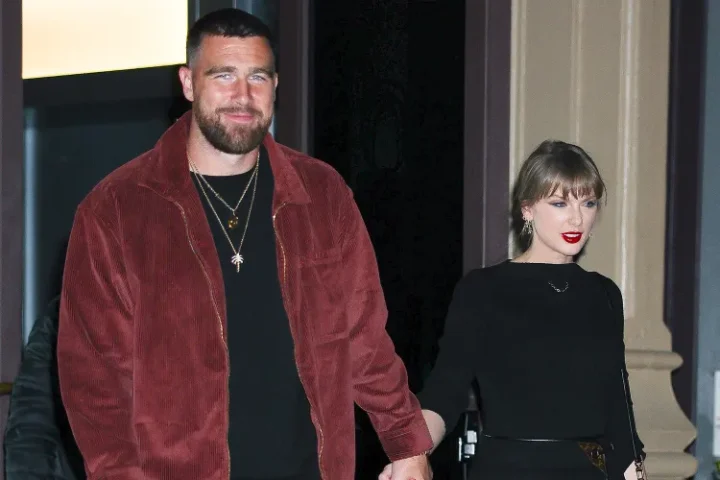Inside the Making of Frankenstein’s Captivating Dungeon Scene: When Jacob Elordi and Mia Goth First Meet

Guillermo del Toro and his creative team reveal the artistry, emotion, and symbolism behind one of the most hauntingly beautiful moments in Netflix’s Frankenstein
Guillermo del Toro’s Frankenstein is shaping up to be one of the most visually and emotionally striking films of the decade — and few scenes capture its poetic horror quite like the first meeting between the Creature (Jacob Elordi) and Elizabeth Lavenza (Mia Goth).
After Victor Frankenstein (Oscar Isaac) banishes what he believes is a failed experiment to the depths of his castle, Elizabeth discovers the Creature chained in the dungeon. What unfolds is not a moment of terror, but one of connection — the film’s most delicate portrayal of beauty within monstrosity.
In an exclusive behind-the-scenes conversation with Entertainment Weekly, del Toro, Goth, and key members of the production — including composer Alexandre Desplat, cinematographer Dan Lausten, set designer Tamara Deverell, makeup artist Mike Hill, and costume designer Kate Hawley — revealed how this pivotal encounter came to life.

Guillermo del Toro: Crafting a Scene of Liberation
Del Toro describes the moment when the Creature lifts Elizabeth’s veil as one of his favorites.
“Jacob trying to lift the veil and then liberating her — Mia and I talked, and I said, ‘This is the first time and only time you reveal yourself to anyone in the film,’” the director explains.
The color palette in the scene was deeply symbolic.
“Mia’s dress — my favorite in the film — carries two subtle strips of purple. She’s the only character with purple besides the Creature. It visually binds their souls.”
The sequence, del Toro admits, was one he had to fight for — but its emotional gravity made it indispensable.
Mia Goth: “We Didn’t Rehearse — You Couldn’t Recreate That Moment”
For Mia Goth, the dungeon encounter was all about instinct.
“We didn’t even rehearse this because you could never mimic that again,” she shares. “Sometimes Guillermo might ask me to do something again, and I’d have no recollection that it happened.”
Her natural, almost trance-like performance mirrors Elizabeth’s empathy — her ability to see past the Creature’s terrifying exterior to the suffering soul beneath.
Alexandre Desplat: Turning Silence into Music
Composer Alexandre Desplat scored the scene with haunting restraint.
“The violin is the invisible thread between them,” he says. “It’s attraction, fragility, connection. I wanted it to be pure and delicate, not romantic.”
He describes the moment as “a ballet with no dialogue,” where sound and silence merge to illuminate Elizabeth as she’s “touched by the soul of the Creature.”
Tamara Deverell: The Circle of Life and Imprisonment
Production designer Tamara Deverell infused the scene with a recurring circle motif seen throughout the film — from the lab windows to the dungeon pipes.
“The circle represents life that keeps looping. The Creature breaks that circle,” she explains.
Even Elizabeth’s bonnet, with its circular halo of flowers, echoes this theme — the idea that love and life persist within confinement.
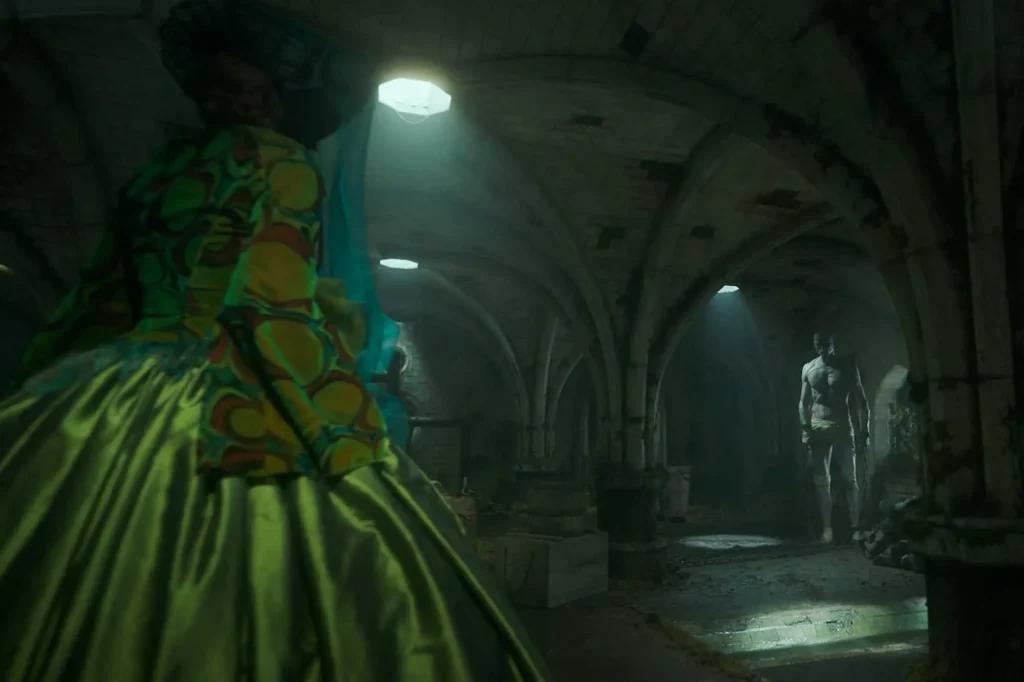
Mike Hill: Beauty in Monstrosity
Makeup artist Mike Hill drew from Mary Shelley’s original descriptions while incorporating visual nods to Boris Karloff’s 1931 portrayal.
“I made him kind of a yellow skull,” Hill says. “That’s from Shelley’s text. The gray-blue tones were a tribute to Karloff — even though that film was black and white.”
But del Toro wanted elegance over horror:
“If David Bowie made a Frankenstein, it would be aesthetically beautiful in its weirdness,” Hill recalls. “Guillermo saw Victor as a rock star, so the Creature had to be art — fractured but sublime.”
The Creature’s missing heart, literally replaced by an open cavity, serves as a “window to the soul.”
Kate Hawley: Dressing Elizabeth as a Beetle
Costume designer Kate Hawley brought del Toro’s vision of Elizabeth as a “beetle” to life — fragile yet armored.
“Her absinthe-colored veil and acid-green duchess satin dress were designed to glow under the dungeon’s light,” she says. “Guillermo wanted her to be both ethereal and elemental — part of the natural world.”
Dan Lausten: Painting with Light
Cinematographer Dan Lausten approached the scene like a painter.
“You want to paint with light and write with a camera,” he explains. “That one small light source falling on their faces — it’s sculptural. It bounces from her chest to his, creating intimacy through illumination.”
“Who Hurt You?” — The Heart of the Scene
The single line of dialogue in the entire sequence — Elizabeth softly asking the Creature, “Who hurt you?” — carries enormous emotional weight.
Del Toro reveals it was inspired by Oscar Wilde’s The Selfish Giant:
“The Giant sees Christ’s wounds and asks, ‘Who hurt you?’ It’s compassion as revelation.”
Desplat’s music fades to silence in that instant, letting emotion resonate.
“The silence takes over,” he says. “You feel the vibration between them.”
A Ballet of Humanity and Horror
In this breathtaking sequence, del Toro’s Frankenstein transcends its gothic roots to become a meditation on empathy — where light and sound, beauty and monstrosity, merge into something deeply human.
For del Toro and his team, the dungeon scene is not just where the Creature meets Elizabeth — it’s where the audience meets the soul of the film.











